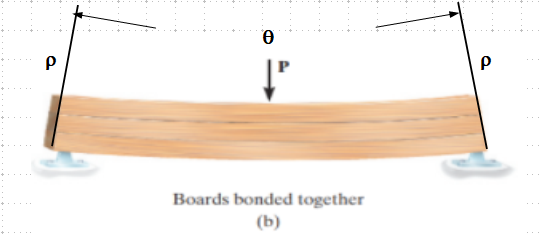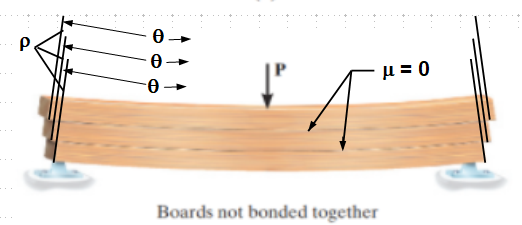I was studying about shear stresses in beams, where one of the ways the textbook tried explaining intuitively the presence of shear stresses in beams was:
 Source : Mechanics of Materials, R.C. Hibbeler
Source : Mechanics of Materials, R.C. Hibbeler
It stated that if the three beams stacked on the top of the other are not bonded then after the application of load they will look like as shown in (a). (Assume the surfaces on the beams are frictionless). In the bonded system, the beams will look like as shown in (b).
Even though I can feel intuitively, in case (a) the beams will be as shown, but I don't get
What is causing them to elongate? Why the topmost beam elongates more than middle one?




